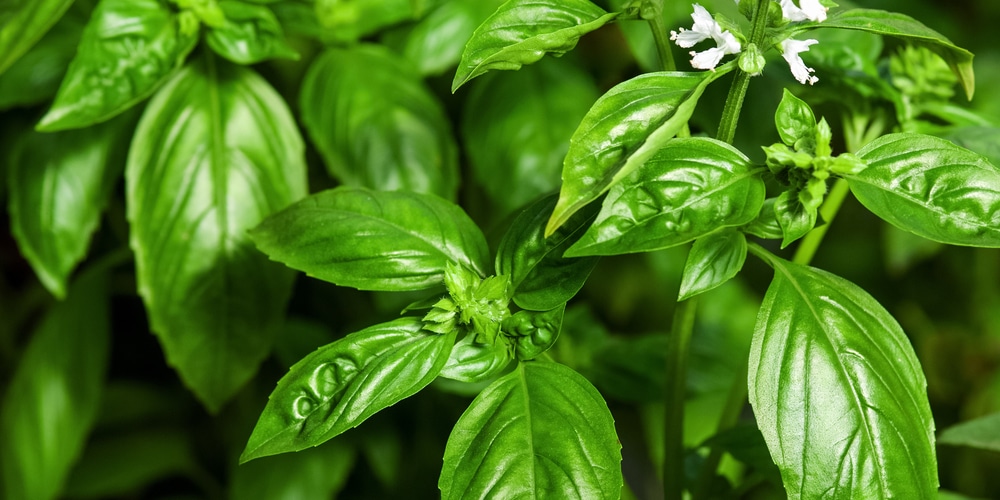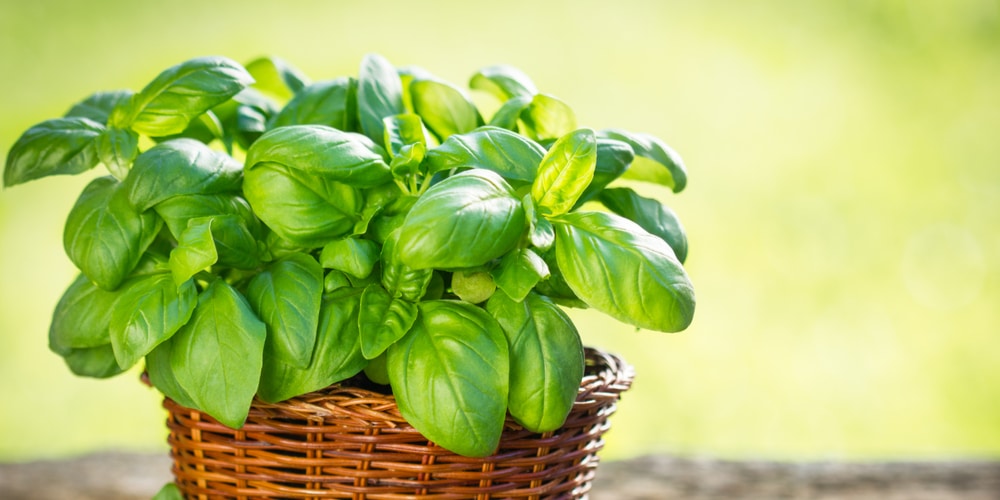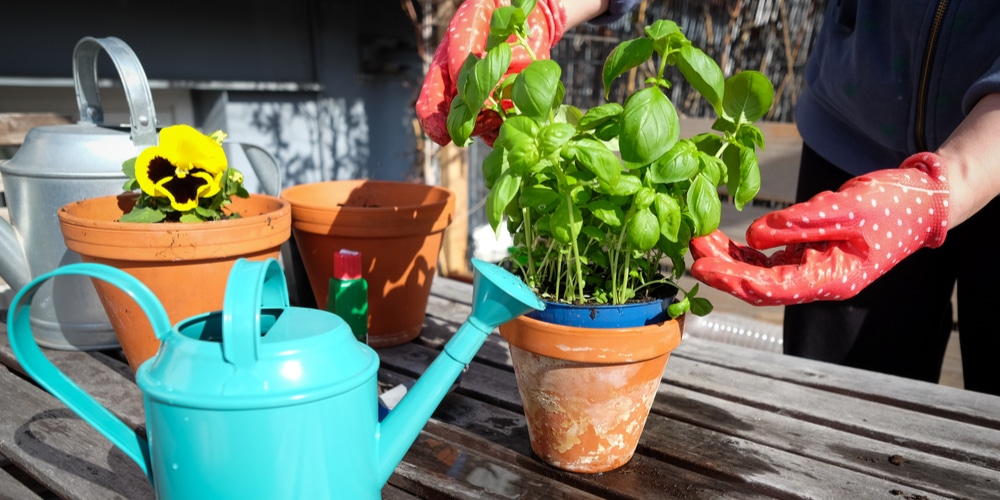Basil is a relatively easy-to-grow herb. If you like to add flavor to your meals using the fruits of your garden, you should consider planting basil. This plant is ideal for beginner gardeners and works wonders even if you don’t have much time to spend in your yard.
Basil Is Hearty
It doesn’t require fertilizer, is resistant to most diseases, and isn’t fussy about soil conditions. If you can find a sunny spot in your yard where your basil can receive at least six hours of sunlight per day, you are halfway through getting plenty of delicious leaves to add to your salads, make homemade pesto, or garnish soups.
The other half of the work has to do with moisture. Basil is a Southeast Asian native plant that needs plenty of water to thrive. Of course, that doesn’t mean you should overwater your herb. Too much water can be counterproductive: it can cause root rot, attract fungal diseases, and might eventually kill your plant.
To avoid adding too much water to your basil, always feel the soil with your fingers: if it is dry to about two inches, it is time to give your herb extra moisture. If not, wait for a couple of days more.
But besides meeting the plant’s basic requirements, you should also pay attention to when you plant your herb. The ideal time frame depends on which USDA hardiness zone you live in.
You are in the right place to learn when to plant basil in Texas. Here, you’ll find everything you need to know about growing this aromatic herb in your yard in this southern region.
When to Plant Basil in Texas: Our Tips
To keep the story short, you should always plant your basil outdoors after the threat of frost has passed. Indeed, these plants won’t survive temperatures below 50F, and planting them too early might halt their growth. Similarly, planting them too late might prevent them from producing harvests. And because basil is an annual plant, all of your efforts will be in vain.
The ideal time to plant your basil in Texas is in early spring, between mid-February and March. Always make sure you check your local weather before taking a decision. Indeed, while looking at the average frost date might help you understand what to expect, the climate can change drastically from one year to another.
As a rule of thumb, if there hasn’t been a first for two weeks straight, it is usually safe to plant your basil outdoors. Some years the last frost might come later (and other earlier).
To get even more harvests, consider starting your seeds indoors. Make your calculations by taking the last average frost date and subtracting 25 days from it. Most varieties of basil take about 20 to 25 days to germinate and be ready for moving outdoors.
Again, we might sound repetitive, but we remind you about the importance of checking your local weather report to avoid making mistakes. As trivial as this might be, planting your basil at the right time of the year will make a considerable difference in your herb’s health and leaf production.
Basil Plant Care

Basil are annual plants that only last a growing season. So even with the best care, you won’t get more leaves from the same plant. The good news is that when planting basil in Texas, you will get harvests for longer than in most other parts of the country: expect to have thriving basil from April until October. But how can you make the most out of your plant? Read on to learn about our recommendations for taking care of basil.
Besides what we mentioned in the introduction to this article, you must pay attention to your plant to make sure it is getting what it needs to thrive.
If you notice your basil is outgrowing its container, don’t wait too long and move it to a different pot. Don’t forget to choose one with drainage holes to minimize the risk of soggy soil. Even if something happens, you can revive basil easily.
When To Plant Basil In Texas: Final thoughts
Also, if you are planting more than one basil, ensure you space them correctly. Indeed, these plants don’t like to struggle and compete for nutrients and water. Place them about 12 inches apart for best results.
Finally, even if basil loves the sun, the scorching sunlight you get in Texas might harm your leaves. Protect your basil from the afternoon sun during extreme summers.
Related Article: How to Harvest Basil Without Killing the Plant

